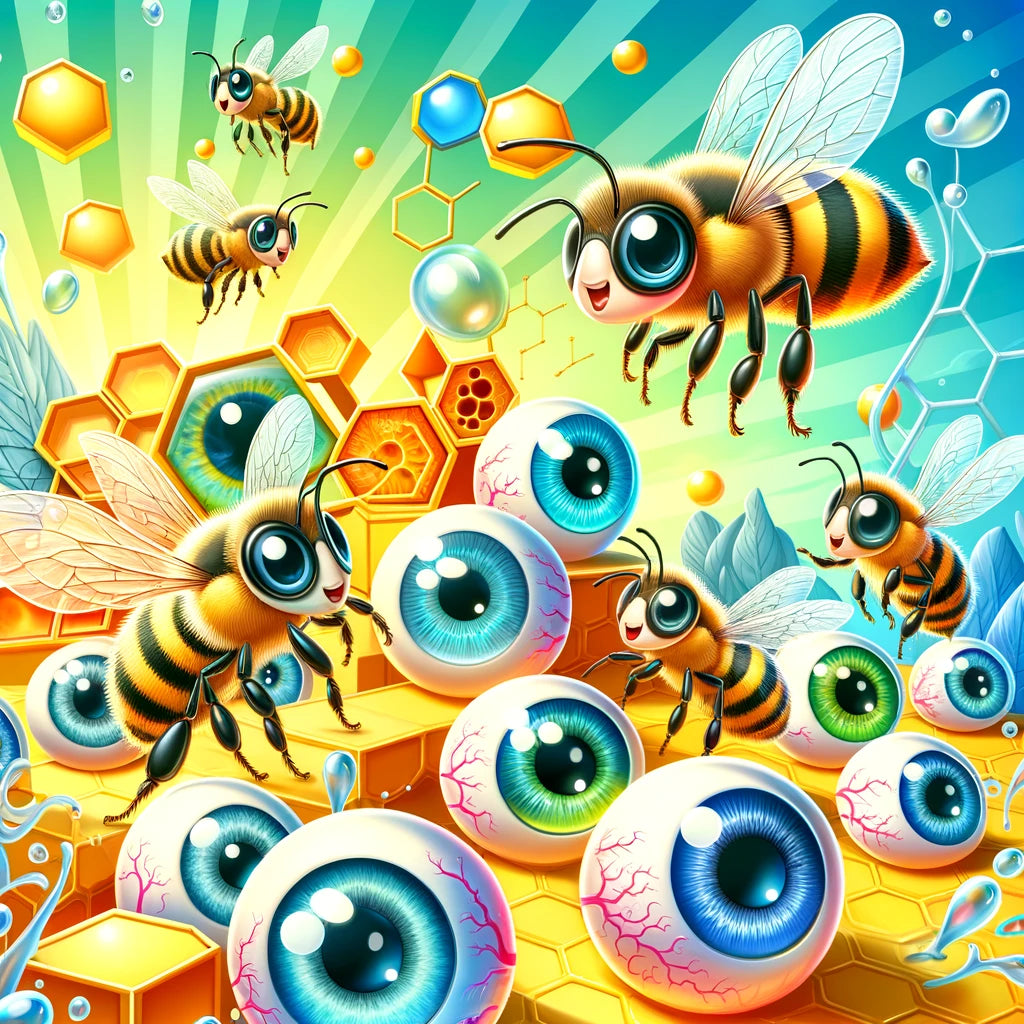
Unveiling the Marvel: The Biology of Bee Eyes
Bees, those tireless pollinators that dance from flower to flower, possess a vision system that's nothing short of extraordinary. Their unique eyesight not only enables them to find and pollinate flowers but also to navigate their environment with precision. Let's delve into the fascinating biology of bee eyes, uncovering the secrets behind their ability to see the world in ways we can only imagine.
A Complex Vision System
At first glance, a bee's eyes might seem quite alien. This is because bees are equipped with two different types of eyes: compound eyes and ocelli. The compound eyes are easily noticeable, significant, and faceted, sitting on either side of the bee's head. These are composed of thousands of tiny lenses called ommatidia.
Each ommatidium collects light from a small portion of the bee's field of vision, working together to construct a mosaic image of its surroundings. This allows bees to detect movement very effectively—an essential skill for avoiding predators and navigating through complex environments.
In contrast, the ocelli are three simple eyes located on the top of a bee's head. These are much more rudimentary and don't form detailed images like the compound eyes. Instead, they're sensitive to light intensity and help the bee understand its orientation relative to the sun, aiding in navigation.
Seeing Beyond the Rainbow
One of the most captivating aspects of bee vision is their perception of color. Bees can see colors we cannot, extending their vision into the ultraviolet spectrum. This ability is crucial for identifying flowers, as many plant species have evolved ultraviolet patterns on their petals specifically to attract pollinators.
These patterns often highlight the entrance to the nectar, acting like a landing strip for bees. Interestingly, while bees can see ultraviolet light and a range of other colors, they cannot see red. To a bee, red appears black, which could affect how they interact with certain flowers.
The Importance of Color and Light
The world of flowers is a competitive one, and plants have developed many strategies to ensure they stand out to pollinators like bees. The ability of bees to see ultraviolet light gives them access to an array of signals invisible to many other creatures, including humans. This vision enables bees to efficiently locate and pollinate flowers, playing a crucial role in the reproductive cycles of many plants.
Furthermore, the sensitivity of bees to polarized light allows them to navigate by the position of the sun, even when clouds hide it. This remarkable trait ensures that bees can find their way back to the hive after long foraging trips, maintaining the hive's supply of pollen and nectar.
Navigational Masters
Apart from their color vision, bees use the pattern of light in the sky, which is polarized, to navigate. They can detect the sun's position indirectly by reading the polarization patterns, an ability that even sophisticated human technology struggles to replicate. This skill is particularly useful on cloudy days when the sun isn't visible. By understanding the light's polarization, bees can still orient themselves and navigate effectively.
Conclusion
The eyes of a bee are marvels of nature, offering a glimpse into a world that is vastly different from our own. Through their compound eyes and ocelli, bees can detect movement, navigate with precision, and see colors in the ultraviolet spectrum, allowing them to interact with their environment in unique ways.
This specialized vision is a key factor in their role as pollinators, helping to sustain the biodiversity of our planet. By understanding the biology of bee eyes, we gain insight into the intricate relationship between flora and fauna and the complex ways in which life on Earth is interlinked.
Frequently Asked Questions About The Biology of Bee Eyes
Q: How many eyes do bees have?
A: Bees have five eyes: two large compound eyes and three smaller ocelli.
Q: Can bees see colors?
A: Yes, bees can see colors, including ultraviolet, but they cannot perceive red.
Q: Why is ultraviolet vision important for bees?
A: Ultraviolet vision helps bees detect patterns on flowers that are invisible to humans, guiding them to nectar.
Q: Do bees use their vision for navigation?
A: Yes, bees use both the sun's position and polarized light patterns in the sky for navigation.
Q: Can bees see in the dark?
A: Bees have limited night vision and are mostly active during daylight when they can see best.



Leave a comment